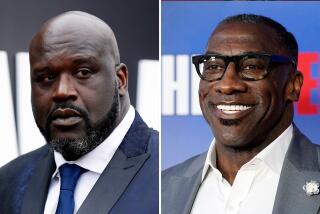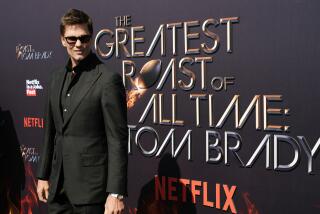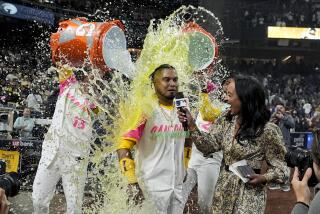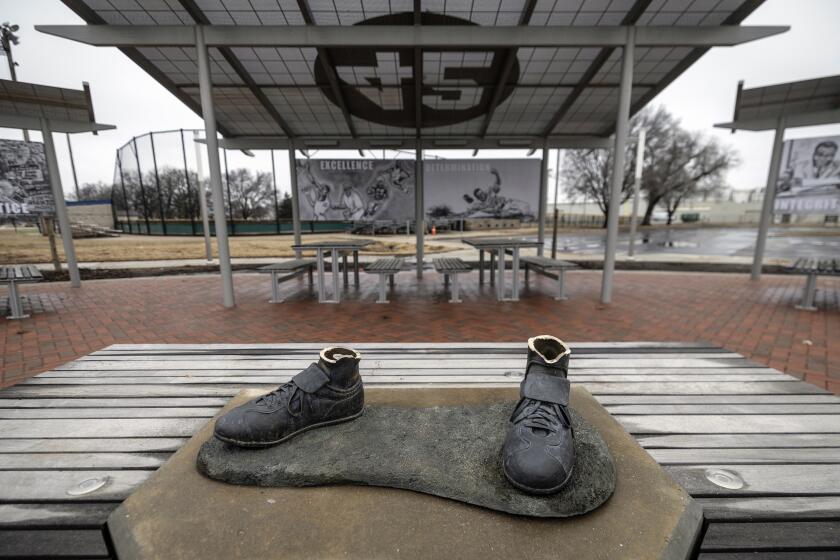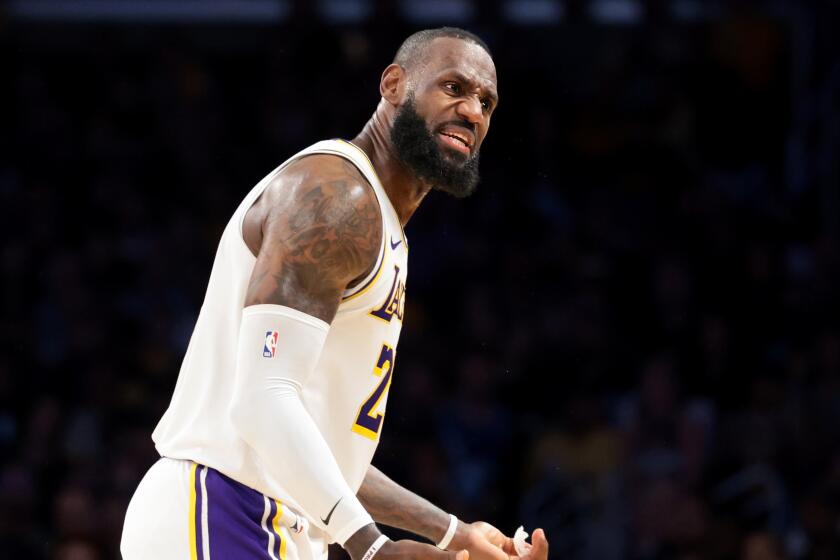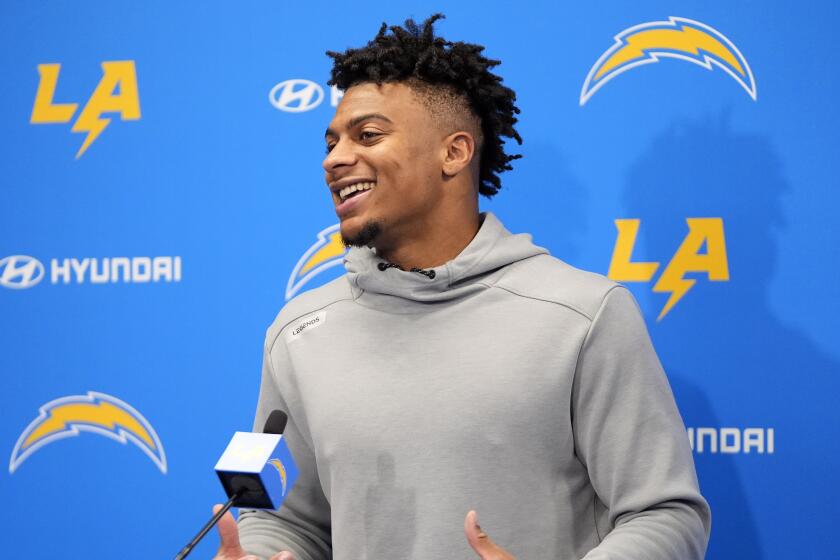OI STORY
Subtle changes have come over the basketball players at St. Mary’s College, things you might not notice at first.
Words such as “reckon” and “mate” have sneaked into their locker room chatter. They occasionally eat sandwiches smeared with Vegemite, dark and gooey.
These things are bound to happen when you take a basketball team from a small California school and infuse the roster with a number of Australians.
“Five of them,” center Omar Samhan says. “You don’t realize how much of their culture we take on.”
Over the past decade, St. Mary’s has established a pipeline that runs halfway around the globe, funneling talented players one after another from Down Under.
This season, the Gaels enter the NCAA tournament -- they face Richmond on Thursday in the first round of the South Regional at Providence, R.I. -- with three imported starters around Samhan, their all-conference senior from nearby San Ramon.
“When it comes to recruiting,” Coach Randy Bennett says, “we’re a bigger deal down there than we are in the United States.”
This relationship might seem odd but listen to Ben Allen, a forward from Melbourne, talk about St. Mary’s fans. How they wave the Australian flag at games. How they chant the national battle cry “Aussie, Aussie, Aussie . . . Oi, Oi, Oi.”
“I didn’t know they knew it,” Allen says. “Unbelievable.”
The closer you look, the more this 8,000-mile connection makes sense.
Reaching down under
It was the spring of 2001 and Bennett had just taken over a Gaels program on a losing streak. One of his assistants mentioned a kid from Western Australia who wanted to play in America.
The problem with recruiting from afar, Bennett couldn’t just hop on a plane. “It’s a bear of a flight,” he says. A few minutes of game film would have to suffice.
“I knew we needed some guards,” he says. “So we took a chance.”
Adam Caporn promptly earned a starting spot and by season’s end led the team in steals and assists. Bennett asked: “Are there any more like you back home?”
That led to Daniel Kickert, who became the school’s all-time leading scorer, then Carlin Hughes and Lucas Walker. With each new face, Bennett learned more about what he was getting.
“They play more possessions, up-tempo, their guards don’t play as much half-court so they’re more turnover-prone,” he says. “They’re not as good at rebounding. You have to work with them.”
But the Australians had plenty of upside, especially when it came to attitude. Thankful for the opportunity, they practiced hard, took care of schoolwork and rarely got in trouble.
“They’re great teammates,” Bennett says. “That sounds funny but with them it’s less individual, more team spirit. As a coach, I value that.”
The Gaels slowly built a reputation in cities such as Melbourne and Perth. That got them Patrick Mills.
Not only was Mills extremely talented, he was an Aboriginal, which made him a good story in the media back home. He left school early last summer and was drafted by the Portland Trail Blazers.
“Patty was so successful,” Allen says. “He really put St. Mary’s on the map in Australia.”
Word spreads
Like most top players in his country, Allen, the forward from Melbourne, trained at the Australian Institute of Sport. He signed with Indiana in 2005 and seemed ready for the big time.
But, almost from the start, his father sensed something amiss.
“Indiana is a big school,” Pat Allen says. “I was there two days on the recruiting trip and I’m sure I didn’t walk halfway across campus. They had 300 students in a class.”
The fact is, even the most-talented Australian players are still teenagers venturing far from home. They are not accustomed to the hype and pressure of American college sports.
“We’ve all heard stories about Aussies coming over here,” said Mal Steindl, whose son Clint, a starter at forward for the Gaels, was recruited out of Queensland. “They haven’t felt comfortable.”
Even at St. Mary’s players face cultural shock, including something of a language barrier.
“When I first got here, I had trouble understanding some of the boys, what they were saying,” says Matt Dellavedova, a freshman guard from Victoria. “I’m sure it worked both ways.”
Rap music -- a thump that resonates throughout locker rooms in America -- can also be a jolt.
“Still not the biggest fan,” Dellavedova says. “I guess it grows on you a little bit.”
The transition was especially hard for Allen in Bloomington, where he started only occasionally and felt lost amid some 40,000 students.
In the summer of 2007, while playing for Australia at the World University Games in Bangkok, he confided in Lucas Walker.
“You should transfer to St. Mary’s,” Walker told him. “We’ve got a good deal over there.”
Comfort zone
The list of Australians who have reached the NBA is brief, highlighted by names such as Mills, Andrew Bogut, Luc Longley and Andrew Gaze.
Still, it represents fertile ground for the Gaels.
Even with a string of winning seasons and a second NCAA tournament invitation in three years, they cannot recruit against larger schools. In Australia, however, it’s a different story.
With so many Australians on the roster, newspapers run frequent stories about the team and television carries some of the games.
“When I go back home, people say they watched me on TV,” Allen says. “That’s crazy because when I played in Australia, hardly any of our games were on.”
So the Gaels can recruit at a level they couldn’t otherwise manage, increasing their edge by hiring former Australian pro David Patrick as an assistant.
“We’re not getting, on paper, the best players from America,” Samhan says. “But we’re getting the best players from Australia.”
They arrive at St. Mary’s by way of a road that climbs through miles of wooded neighborhoods, over a gentle rise, descending to an enclave of white stucco buildings with red-tile roofs.
The place seems familiar to Dellavedova who, like several of his compatriots, grew up outside the big city. Classes are small and basketball games feel like town gatherings, students and locals crowding the matchbox gym.
“It’s like a big family,” Dellavedova says.
And that is why the arrangement makes sense. The Gaels get the talent, and the players get something in return.
They get crowds chanting “Oi” and teammates -- even American teammates -- who call them “mates.”
They get a school that feels like home.
twitter.com/LATimesWharton
More to Read
Get our high school sports newsletter
Prep Rally is devoted to the SoCal high school sports experience, bringing you scores, stories and a behind-the-scenes look at what makes prep sports so popular.
You may occasionally receive promotional content from the Los Angeles Times.
